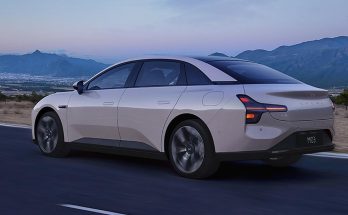Introduction to the Mazda Logo
The world of automotive branding is ever-evolving, and one logo that’s been a staple for car enthusiasts is the Mazda logo. Known for its sleek design and strong identity, it has represented innovation and performance since its inception. But now, there’s buzz in the air—the Mazda logo is changing! This shift not only marks a new chapter for the brand but also reflects broader trends in automotive design. As we dive into this fascinating transformation, let’s explore what makes the new Mazda logo stand out and how it resonates with both fans and newcomers alike.
History of the Mazda Logo
The Mazda logo has a rich history that dates back to the company’s founding in 1920. Originally, it featured a stylized “M” that reflected the brand’s commitment to innovation and quality.
In the early years, various designs were experimented with as Mazda evolved from a manufacturer of cork products to an automotive giant. The first official car logo emerged in 1936, showcasing simplicity yet elegance.
By the late 1960s, Mazda introduced a more modern version of its emblem—a distinctive wing shape symbolizing agility and speed. This design resonated well with consumers and captured the essence of their vehicles.
As times changed, so did tastes. Over decades, small adjustments maintained relevance while preserving core identity. Each iteration told part of Mazda’s journey through triumphs and challenges in the automotive landscape.
Reasons for Changing the Logo
The decision to change the Mazda logo stems from a desire for modernization. As trends shift, companies must adapt their branding to stay relevant in a competitive market.
Mazda aims to reflect its innovative spirit and commitment to sustainability through this fresh design. The auto industry is evolving rapidly, with electric vehicles becoming mainstream. A new logo symbolizes Mazda’s alignment with these advancements.
Another reason is the need for better visibility across various digital platforms. With more consumers engaging online, an updated visual identity can enhance brand recognition on social media and mobile devices.
Consumer feedback played a role in this transformation. Engaging with fans revealed a yearning for something bold yet reflective of Mazda’s heritage—striking that balance was crucial in their redesign process.
Design and Symbolism of the New Logo
The new Mazda logo presents a sleek and modern aesthetic. Its refined shape embodies motion and fluidity, reflecting the brand’s commitment to innovation.
At its core, the design remains true to Mazda’s heritage while embracing contemporary trends. The iconic “M” has been streamlined, emphasizing elegance without sacrificing recognition.
Symbolically, the curves of the logo evoke a sense of speed and agility. It suggests that Mazda vehicles are not just modes of transportation but experiences crafted for drivers who crave excitement.
Additionally, the minimalist approach aligns with global design shifts toward simplicity. This resonates well in today’s market where clarity is paramount.
This new emblem invites curiosity and conveys confidence—traits synonymous with Mazda’s identity as an automotive pioneer. Fans will find both familiarity and freshness in this exciting update.
Reactions and Criticisms from Fans
The unveiling of the new Mazda logo has sparked a lively debate among fans and automotive enthusiasts. Some applaud the modern aesthetic, praising its sleek lines and minimalistic approach. They appreciate how it reflects Mazda’s commitment to innovation.
On the flip side, a vocal segment of loyalists expresses disappointment. Many feel that the change strays too far from the brand’s heritage. For these fans, nostalgia plays a significant role in their connection to Mazda.
Social media platforms are abuzz with mixed reactions. While some users share excitement about what this means for future designs, others reminisce about past logos filled with character and history.
Fan forums have become hotbeds for discussion as opinions clash. The divide showcases just how invested people are in the brand’s visual identity and its evolution over time. This passionate dialogue highlights not only love for cars but also deep emotional ties to branding itself.
The Impact of the New Logo on Brand Image
The introduction of the new Mazda logo marks a pivotal shift in brand identity. It reflects a commitment to innovation while paying homage to the company’s rich heritage.
With its sleek, modern design, the logo aims to capture a younger audience. This fresh look aligns with contemporary automotive trends and resonates well with tech-savvy consumers.
Moreover, rebranding can rejuvenate customer loyalty. Existing fans may appreciate the nod to tradition combined with forward-thinking aesthetics.
How customers perceive this change will shape Mazda’s market positioning. A successful transition could elevate their status among competitors significantly.
In an era where visual identity is crucial, this new logo has potential far beyond mere appearance. It embodies Mazda’s vision for future growth and evolution in the automotive industry. The stakes are high; only time will reveal its true impact on brand image and consumer sentiment.
Conclusion
The Mazda logo has undergone a significant transformation, reflecting the brand’s evolution and response to modern automotive design trends. This change is not just about aesthetics; it carries deeper meanings tied to innovation and forward-thinking philosophy.
As reactions pour in from loyal fans and new audiences alike, it’s clear that the impact of this redesign will resonate well beyond mere visuals. The bold new look is expected to enhance Mazda’s identity in an increasingly competitive market while paying homage to its rich history.
Whether embraced or critiqued, the updated Mazda logo marks a pivotal moment for the brand as it drives into the future with renewed vigor and purpose. Only time will tell how this shift influences consumer perception and loyalty moving forward.



